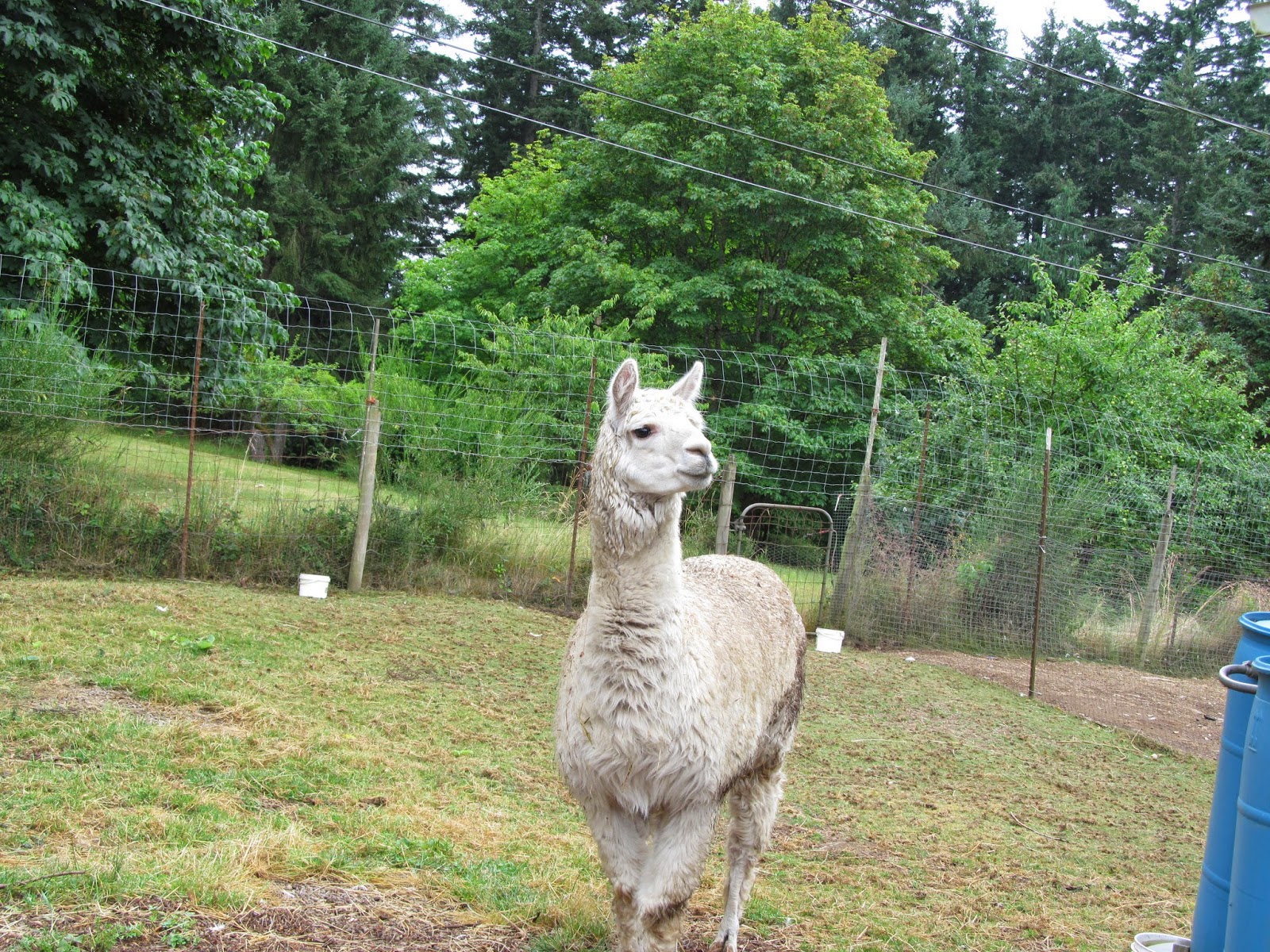Sounds like you have a good grounding in livestock. I like your plan. I think it could work well.
I wish I could be of more help with stock rate. Even on our land, it varies drastically with the time of year. Some seasons, the land can easily handle one alpaca per couple of hundred square yards. Other times of year, it's two acres per alpaca. We have to supplement hay and llama text year round - even though our plants and land are surprisingly similar to their ancestral diet, they are not domesticated the same way a sheep is. Sheep are use to adapting to where the humans live. Different breeds of sheep for different environments. I don't know enough about alpacas to know if there are different kinds for different landscapes. I imagine it's the different approach to domestication - old world / new world.
I was a lot like your husband. I thought sheep were weird looking, almost demonic, creatures that were only good if knitted or roasted. That's because I had only ever met modern sheep. When my friends lost their farm, we boarded their Icelandic sheep for almost two years. It was amazing. These were independent sheep. They could eat all manner of food. The only issue we had was overcrowding and Selenium deficiency. I learned that sheep can be intelligent and affectionate. Keep the minerals balanced and their health takes care of itself. Now that we have the minerals almost right, their feet hardly ever need trimming. I have on girl that's gone almost two years with no need for a trim. Minerals can also reduce parasite issues - see the book natural Sheep Care by Coleby. With a small flock and daily interaction, it's easy to spot parasite build up. It's nice being able to worm and medicate on demand with my sheep. Many other farmers in our area worm to schedule, sometimes monthly. Ours is one of the few farms with virtually nil parasite issue AND no wormer resistance. I highly recommend Coleby's writings - she writes about goats, and I think some other animals - if you are interested in preventive care.
The other thing that has me praising sheep over alpacas is the vet. There is only one vet in our area, maybe three in the province, that will touch alpacas. Legally, where I live, there are a lot of medicines and supplies that can only be bought through the vet or under their guidance. If my alpaca gets sick, needs his balls off, has trouble popping out the babies, you know, Vet-stuff... If something happens, and it happens on a Sunday or after hours, the animals dead. If it happens during vet hours then it's a 2 hour drive to the nearest alpaca vet, or almost a grand for the vet to come to the farm (not including care for the animal).
On the flip side. I do enjoy my alpacas. They are cute, funny, and overflowing with personality. Their fibre is soft and a delight to work with. The fibre isn't high enough quality to sell raw, but sells well as handspun yarn. Llama/alpaca berries go for about $5 a gallon here. Another good source of income if we didn't use it all on the farm. A sparse sprinkle of llama berries on the surface of the soil twice a year and the plants grow strong roots and circulatory systems. Alpacas poop in the same area, making collection of their berries easy.
Alpacas haven't been my passion, so I don't tend to stay up late reading veterinary manuals about their health. Instead, I have two local-ish gurus that I consult. Our main guru, the Llama Lady, and her teacher the Alpaca Lady. One of both of them come 'round twice a year to do the health check, shots, and anything else that needs doing. They've known my llamas and alpacas for a decade or two, so they can see year to year how the animals are doing. I ask their advice, they give it, I do it (which is apparently unusual), and the animals stay healthy.
The one thing I've learned about sheep and alpacas is that there are a lot of opinions and different ways to keep the animals. With my alpacas, I'm fairly hands off because they were treated so badly by humans in the past. Our goal with these animals is to keep them healthy and happy. They have come to trust us and like being near humans, so long as it's on their terms. We worm on schedule because I don't know how to tell if an alpaca has a heavy parasite load.

This is Beau. Think 550+ pounds of opinionated alpaca. Yes, he is an alpaca, or so the experts tell me. My llama is only just 500lbs.
With my sheep, I'm more hands on. I check their health casually at least once a day, and manage their health primarily through diet - consulting the vet if there is something I don't understand. Applying medicine on demand only. This is not a popular method of sheep care in my area. I get a lot of flack from other hobby farmers and professional shepherds. The only people who seem happy with my method is my sheerer - who says I have the healthiest sheep on The Island (an island with about 30,000 sheep), my vet, myself, and my sheep. Everyone else seems to think I should medicate if the critters need it or not.

Lary as a lamb. He's a buddy sheep. Supposedly a wether (balls off) he actually has one left behind but thankfully isn't aggressive. Whenever I need to learn something, I take lary (now a good 250lbs sheep) to the vet and ask the vet to show me how to... ... give shots... or whatever I need to learn. That way it saves me several hundred dollars on having the vet out to the farm.
Ops, this got way-away from your question. Let's see if I can condense my thoughts a bit better. Take what you want from it. I certainly don't know everything.
Your land is your best teacher. Observe it at every opportunity. There are a lot of different styles of animal care that work. Finding one that works for you may take a bit of trial and error. Don't feel you have to do it one way just because someone told you so.What works in some parts of the world (aka, in books and websites) may not work for you.Or it might work wonderfully for you. You won't know 'till you try it.Gather gurus. This is a good place to focus on. At least one guru per animal type.
Choose a guru that fits your values and ideas. Choose on the bases of their animal health rather than bravado. Someone who's been doing this for 20 years may be terrible at it and have sickly creatures. Ask your would be guru questions that you already know the answer - if they answer differently than what you know, ask them why - if they can explain in a way that makes sense, maybe they are on to something and are worth listening to. You don't have to do what your guru says - these will be
your animals after all - but it is worth having someone to consult with.
Hoping someone here will chime in with ideas about stock rate. All I know is for my land. I've had everything from 2 sheep to 60 on our 2 acres of pasture (there's no legal limit here - something else to think about, legal issues as to animal density where you live), and I've observed how the land reacted and how it recovered from overgrazing. I've come to the conclusion that 4 to 8 adults, plus their lambs, is a good amount of sheep for this land on an average year.

 2
2




 10
10











 3
3




 1
1




 6
6











 2
2




 2
2




 10
10




 3
3











 3
3




 1
1




 2
2




 2
2




 2
2




 3
3




 3
3









